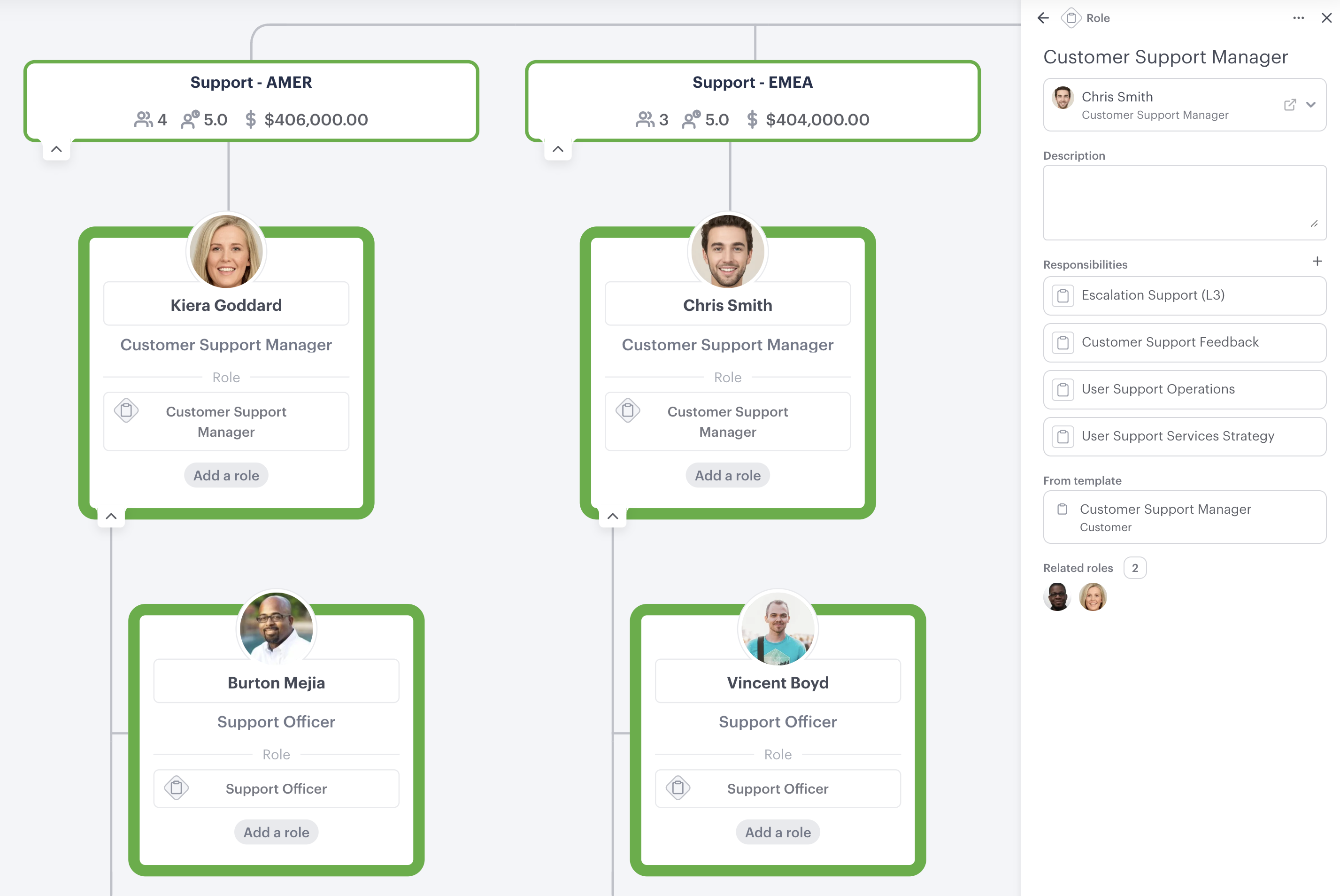Org Design Guide: Building an executive accountability chart
High-level accountability planning provides strategic direction for the wider organization and informs individual teams' tactical planning.
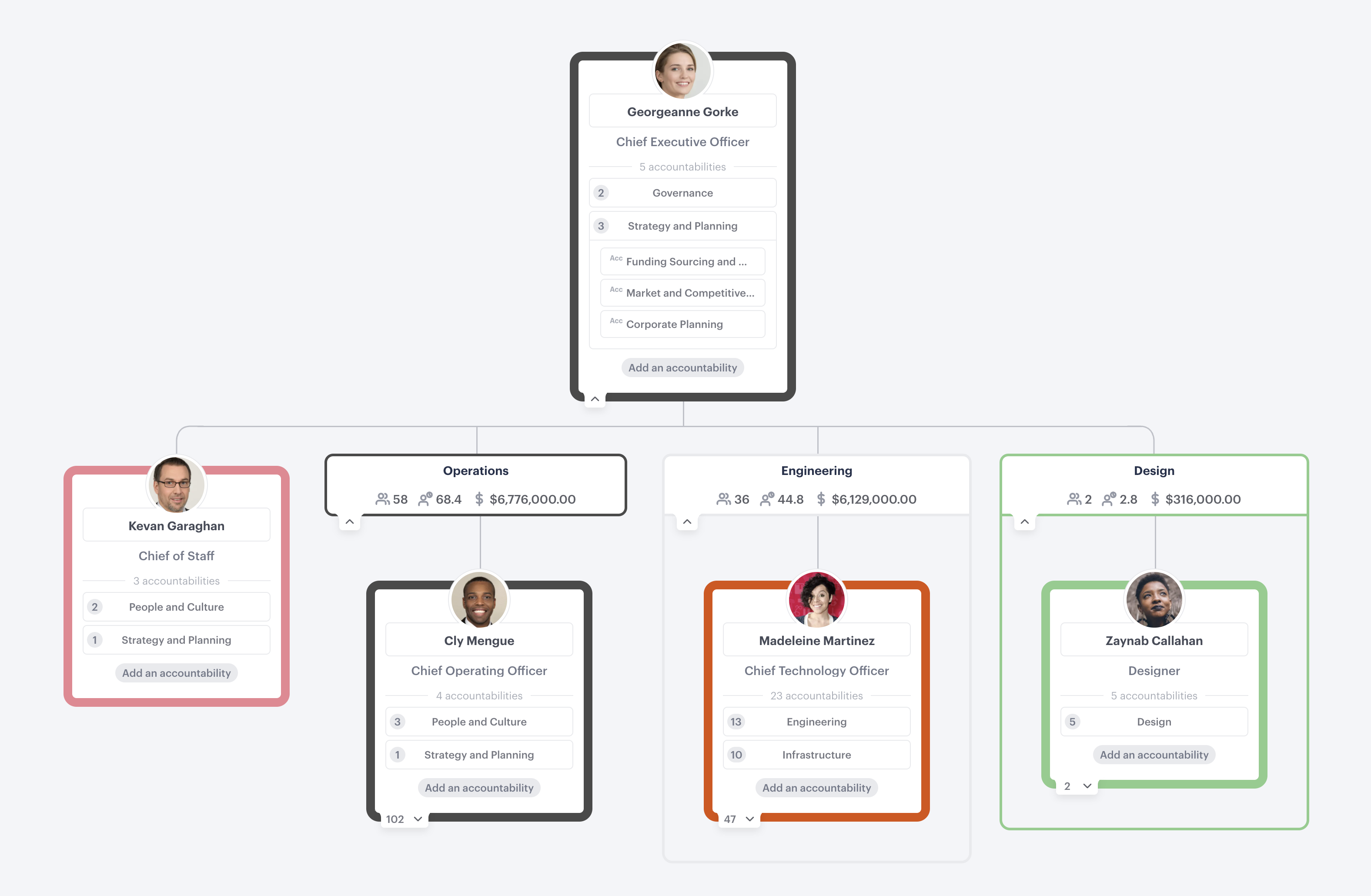
Why do accountability planning?
Mapping the accountabilities of your current organization will give you a clearer picture of where work should get done and where there may be gaps, cracks, or overlaps. It presents the perfect opportunity to analyze and optimize the allocation of accountabilities in your organization.
It also provides a common strategic direction for your entire organization so that the tactical planning of individual teams and groups isn't taking place in isolation.
What's your organizational strategy?
If you read our article about organizational strategy, you'll know it's a "plan of action or policy designed to achieve a particular goal or set of goals." As such, it should be front and center of mind when going through an accountability planning process.
Steps to creating an executive accountability chart:
- Create your functional chart
- Prepare your org chart
- Share with collaborators
- Map accountabilities
- Export your executive accountability chart
- Keeping track of your accountabilities
- Map roles & responsibilities
1. Create your functional chart
The first thing you may ask is, "what is a functional chart"? A functional chart is a living document containing the accountabilities required for your organization to execute its strategic plan successfully. Your functional chart comprises superfunctions (the headings) and functions (the subheadings) below.
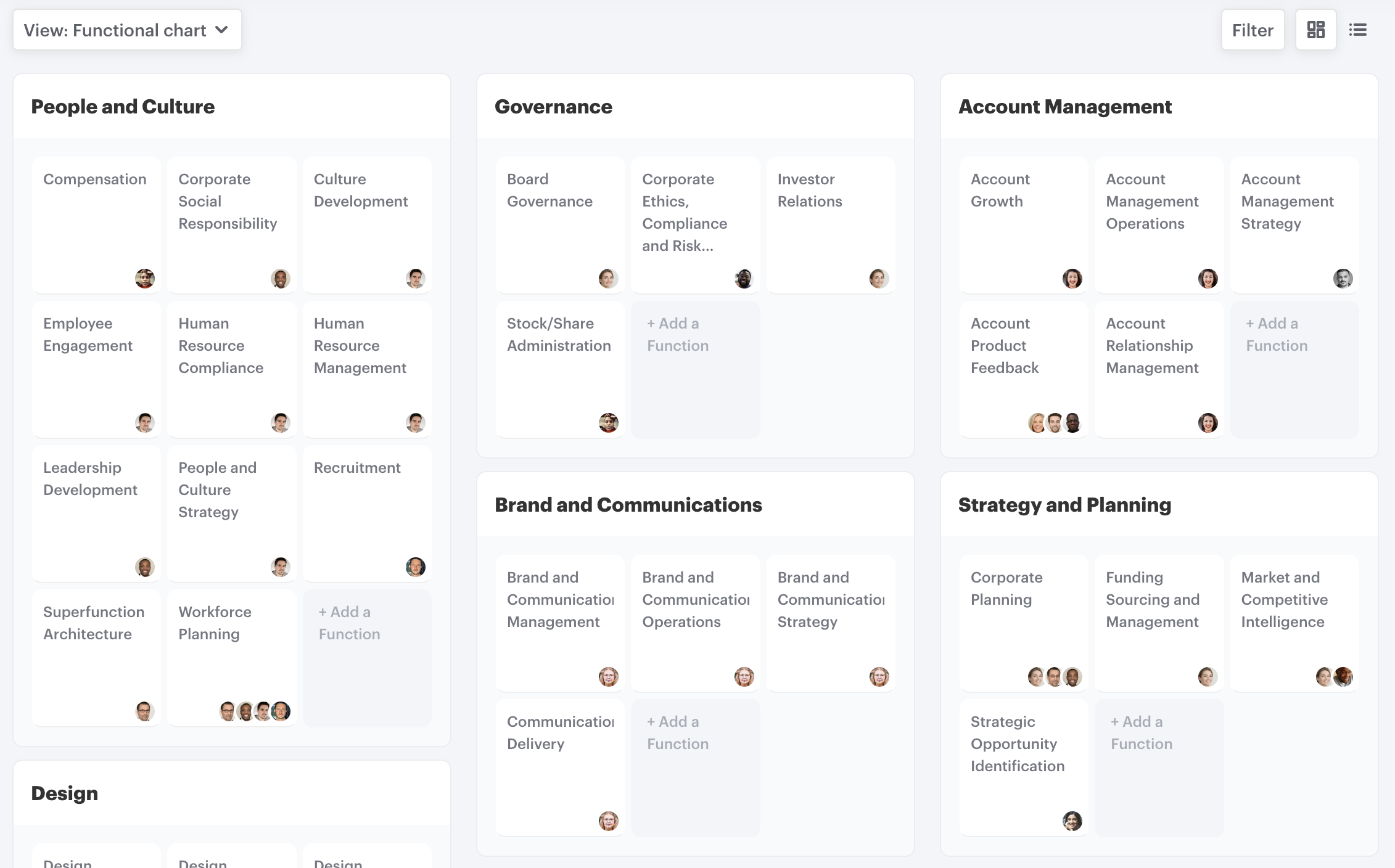
Choose a pre-generated or blank functional library and start creating the accountabilities your organization needs to achieve its goals.
Before mapping accountabilities, it's important to ensure that you have the superfunctions and functions that accurately reflect your organization's strategy. Accountability planning starts at a high level and should inform the more detailed planning of individual teams, making it essential that this step in the process sets the rest of the organization up for success.
If you are building your own functional chart from scratch, you'll most likely want to involve other stakeholders to guarantee a comprehensive list that aligns with your organizational strategy; click here to jump to the section on how to share.
2. Prepare your org chart
Before mapping accountabilities in your organization, you'll first want to prepare your org chart.
You can work with your entire current state organization and have a complete picture of the existing org structure, allowing you to contextualize where the work will be completed.
For example, with a current state org chart, you may see that Bob reports to Jane and because Bob has been responsible for "communications delivery" in the past that Jane should be accountable for it, even though Jane may not be the most appropriate person to make accountable.
For this reason, you may want to start with an org chart of just the key stakeholders in the accountability mapping process.
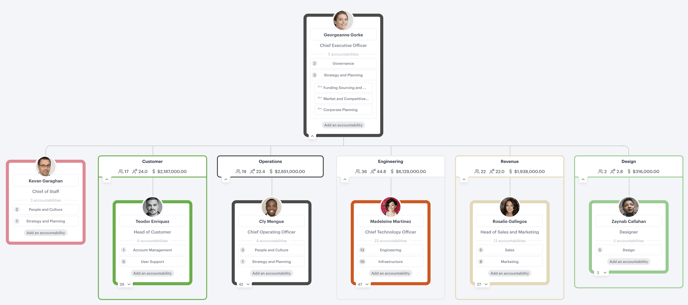
Generate your entire current state organization
In our guide, you can find the steps needed to generate your current state organization here.
Add key positions for accountability planning
- Open your scenario
- Hover over any position
- Click "+ Add position" above, below, or next to any position
- Hover over the position
- Click "assign person"
- Type in the person's name and hit enter
3. Share with other stakeholders
Adding other key stakeholders who are involved in your strategy planning prior to mapping accountabilities means that decision-making isn't happening in a vacuum and should help ensure that buy-in is easier to attain.
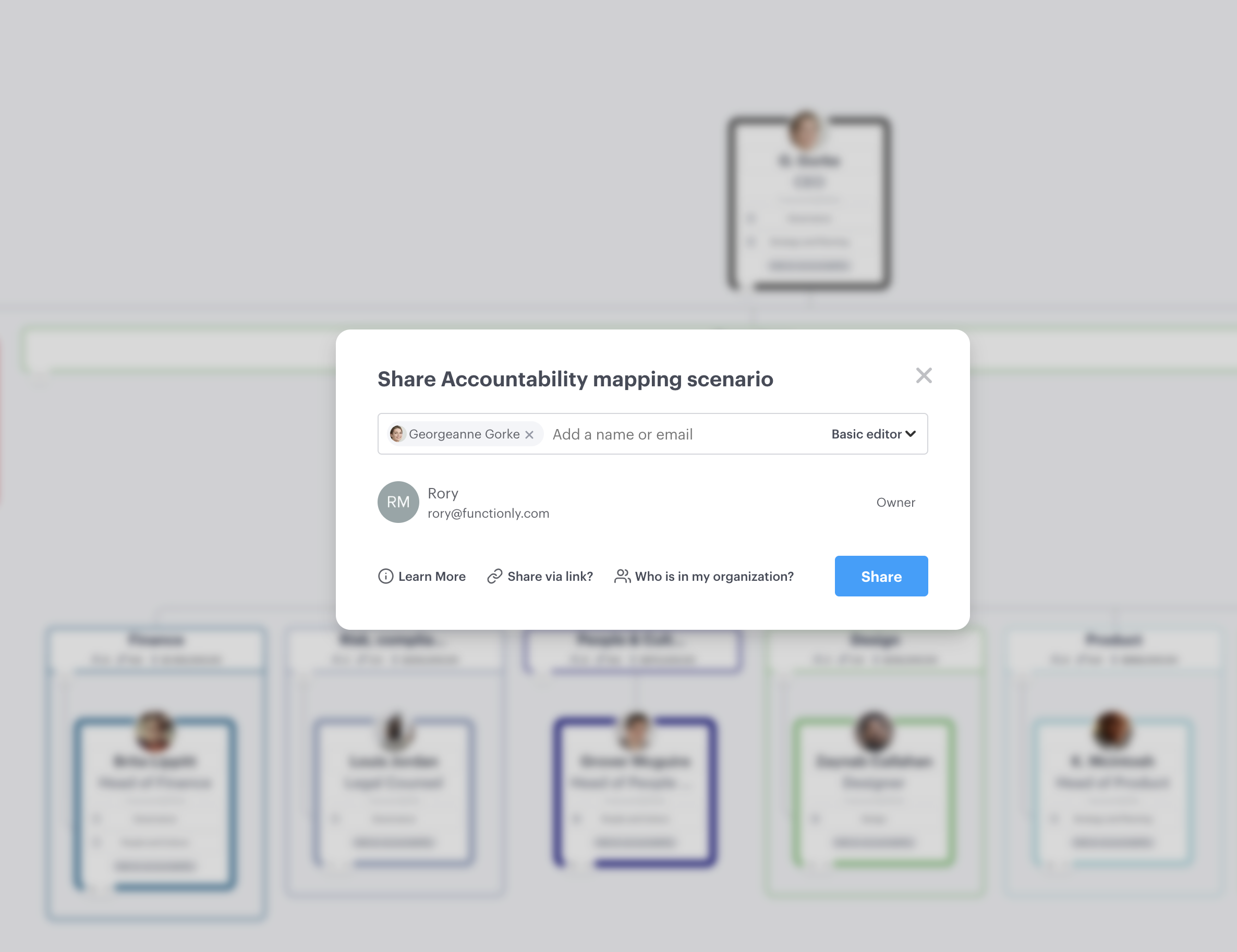
Read here how to share your scenario with others.
4. Map accountabilities
If you read our article about how to build an effective chart, you might remember the different definitions for "Accountability" and "Responsibility" in a RACI chart. An accountable person "makes decisions and takes actions on the tasks", and a person who is responsible "will complete tasks".
The early stages of any planning process will likely begin at a high level. For that reason, you will most likely start by mapping accountabilities initially, then allowing those accountable people to decide who from their teams will be responsible.
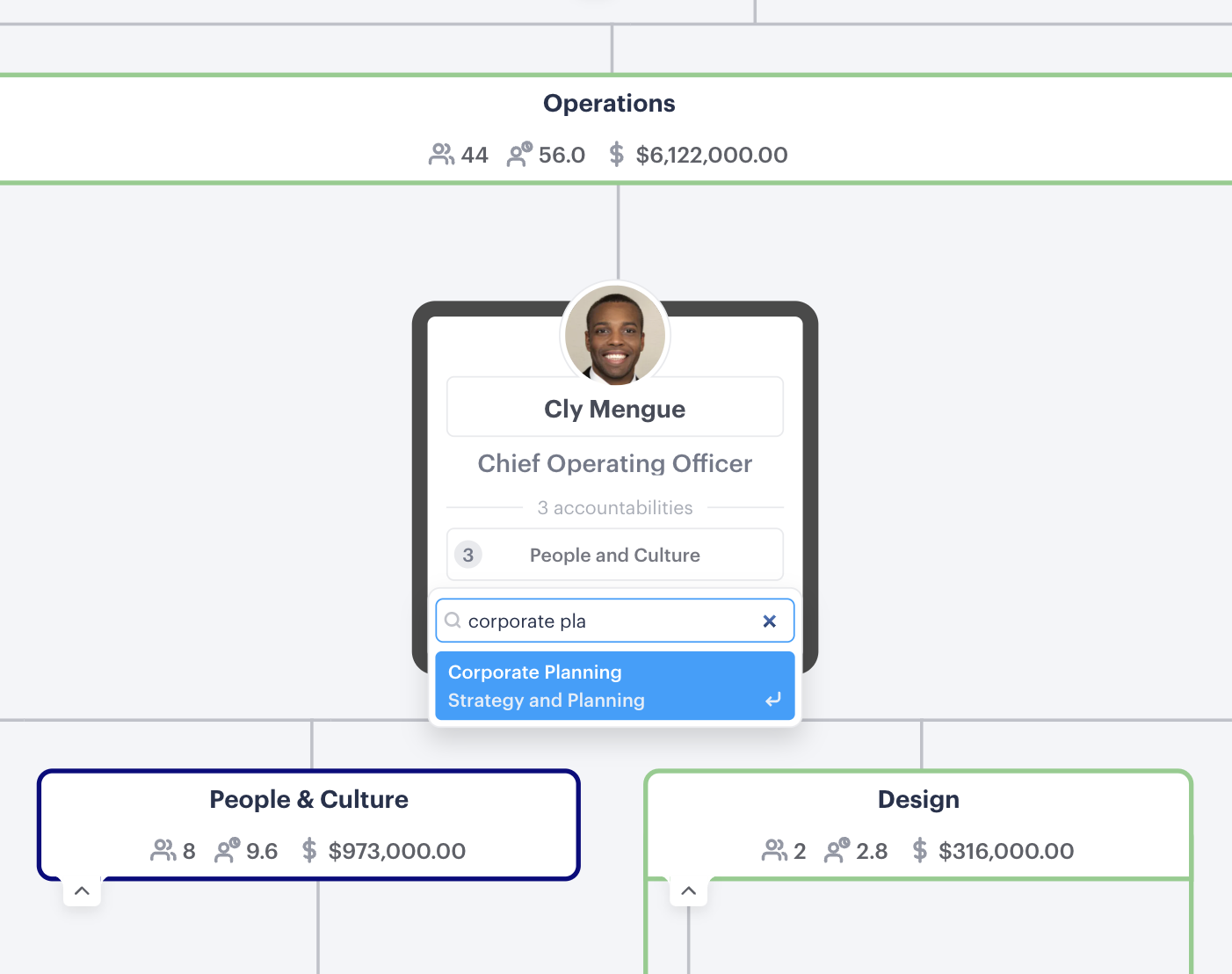
5. Tracking your accountabilities
During and after the accountability mapping process, there are tools to help track where accountabilities are allocated and any accountabilities that don't have an owner.
On the organizational chart
As you apply each accountability from the "functions" tab in the left-hand menu, you'll see the grey dots next to them disappear. If you get to the end of the process and notice that some still have grey dots next to them, it indicates that you still have accountability gaps that need to be resolved.
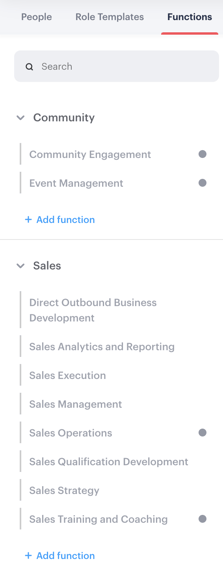
On the functional chart
If you want a picture of all of the accountabilities in your organization and who is accountable, you can see this from your functional chart. Each function will have the accountable person's avatar next to it, and by hovering over the avatar, you can see their name.
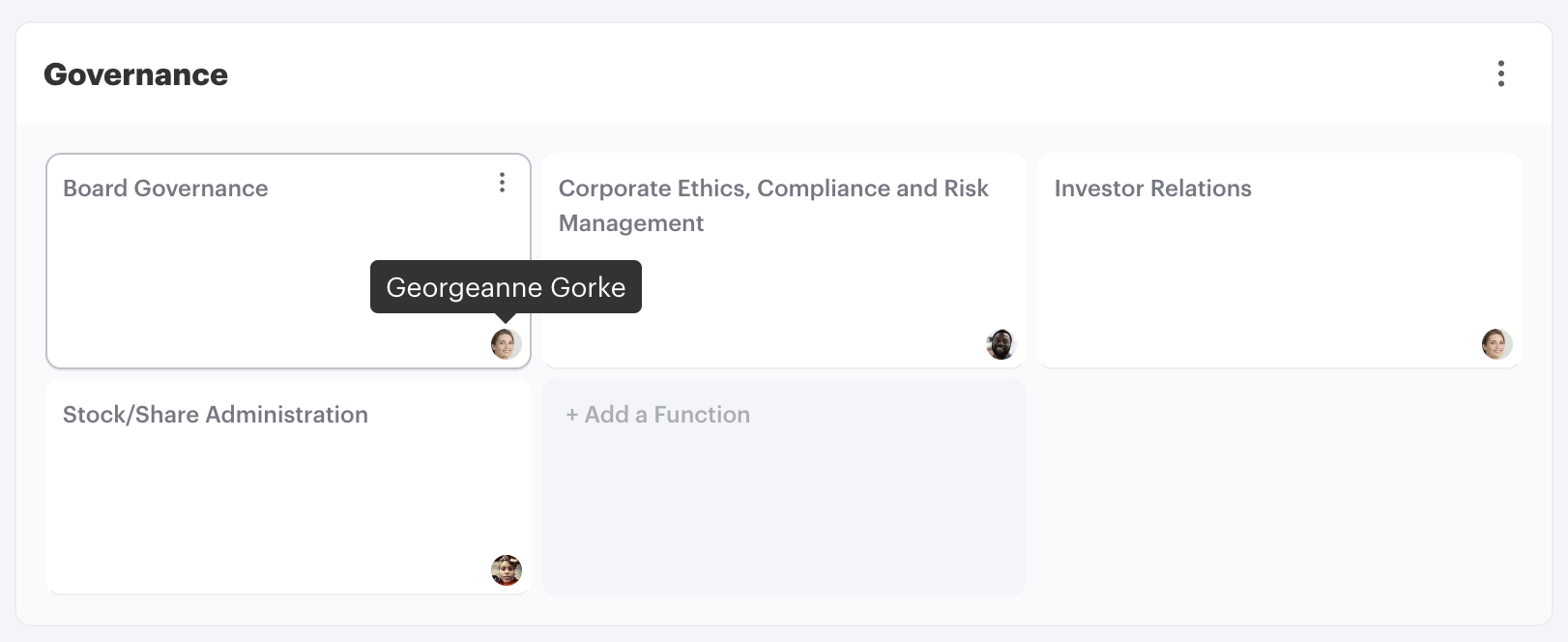
If an accountability has a circle with a line through it, it doesn't have an owner, representing an accountability gap.
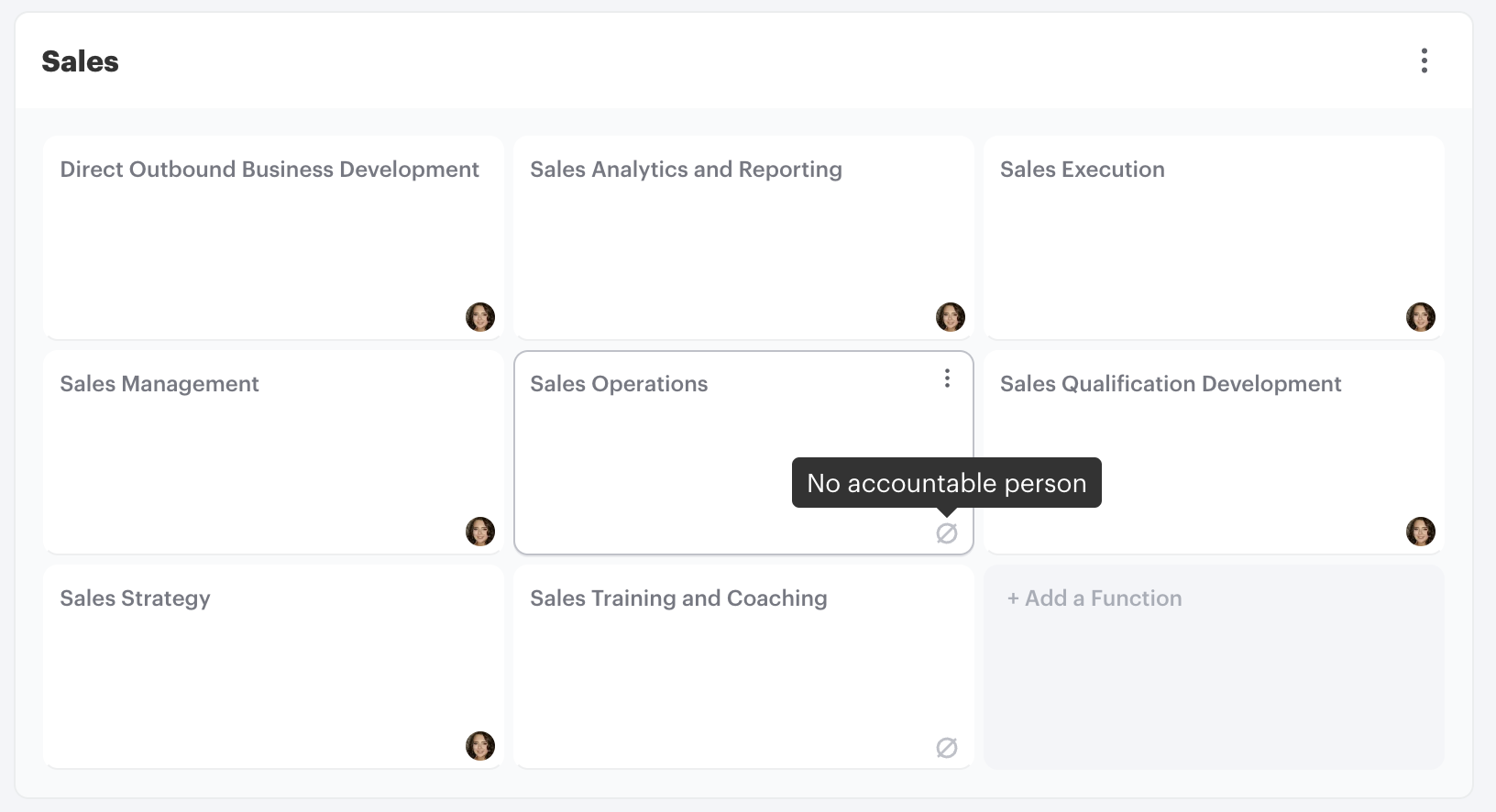
If there are functions that have more than one person's avatar next to them, then these are accountability overlaps, and you may need to discuss who is going to have ultimate accountability to reduce organizational confusion. If the accountability is shared between two people, say from different functional areas of the organization, then it's important that there's strategic alignment between those people, otherwise misalignment may result in confusion and inefficiency in the business.
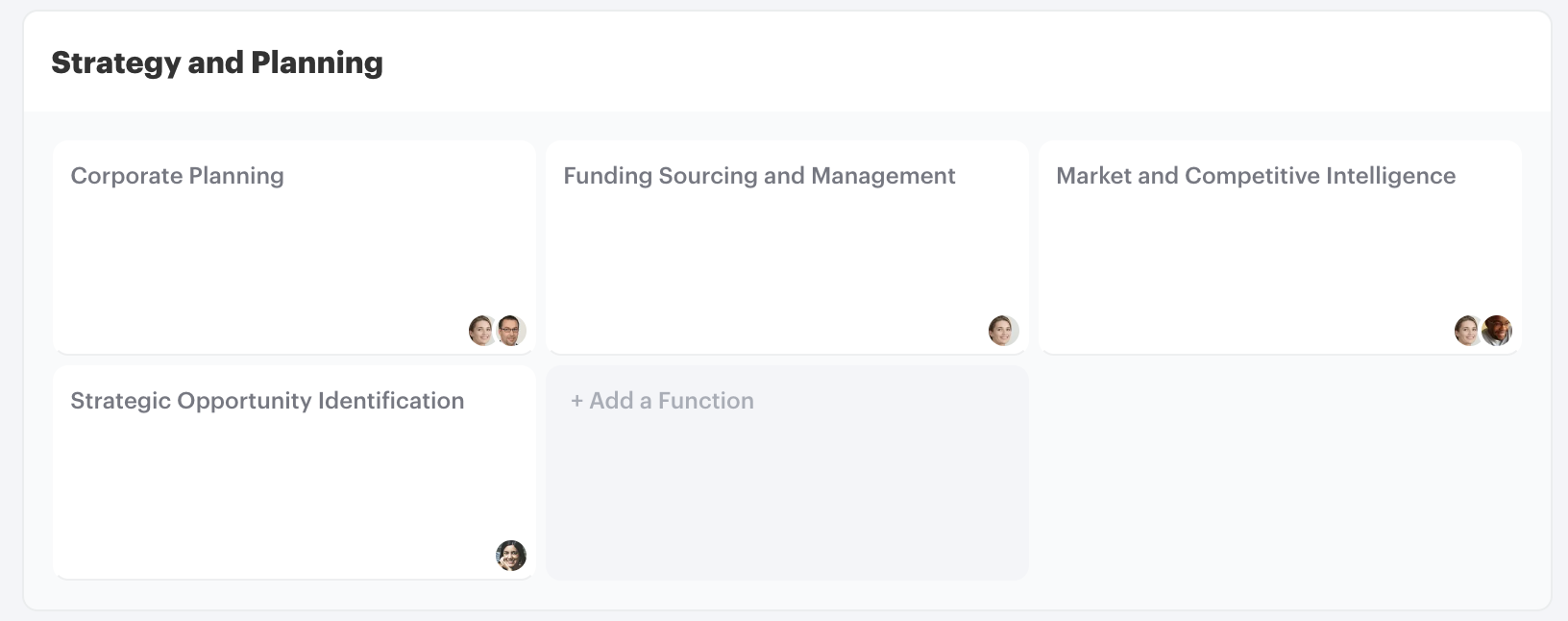
6. Export and share your executive accountability chart
Once the process has been completed, most customers we speak to want a hard copy as a record, in many cases to print and "stick on the wall" so that their executive accountability chart is more than just an exercise in and of itself.
Exporting
Exporting your executive accountability chart is an easy and quick way to share the outcome of the accountability mapping process.
Share a link to your executive accountability chart
You can easily share a link to your scenario, providing viewers with a view-only version and not requiring them to create a Functionly account.
Learn how to share a link to your org chart so that others can see changes as it's updated.
7. Map roles & responsibilities
Once you have gone through the process of allocating accountabilities across your organization, the next step is for the accountable people to start working with their teams and get into the detail of who is responsible for the work and what the process for completion looks like.
